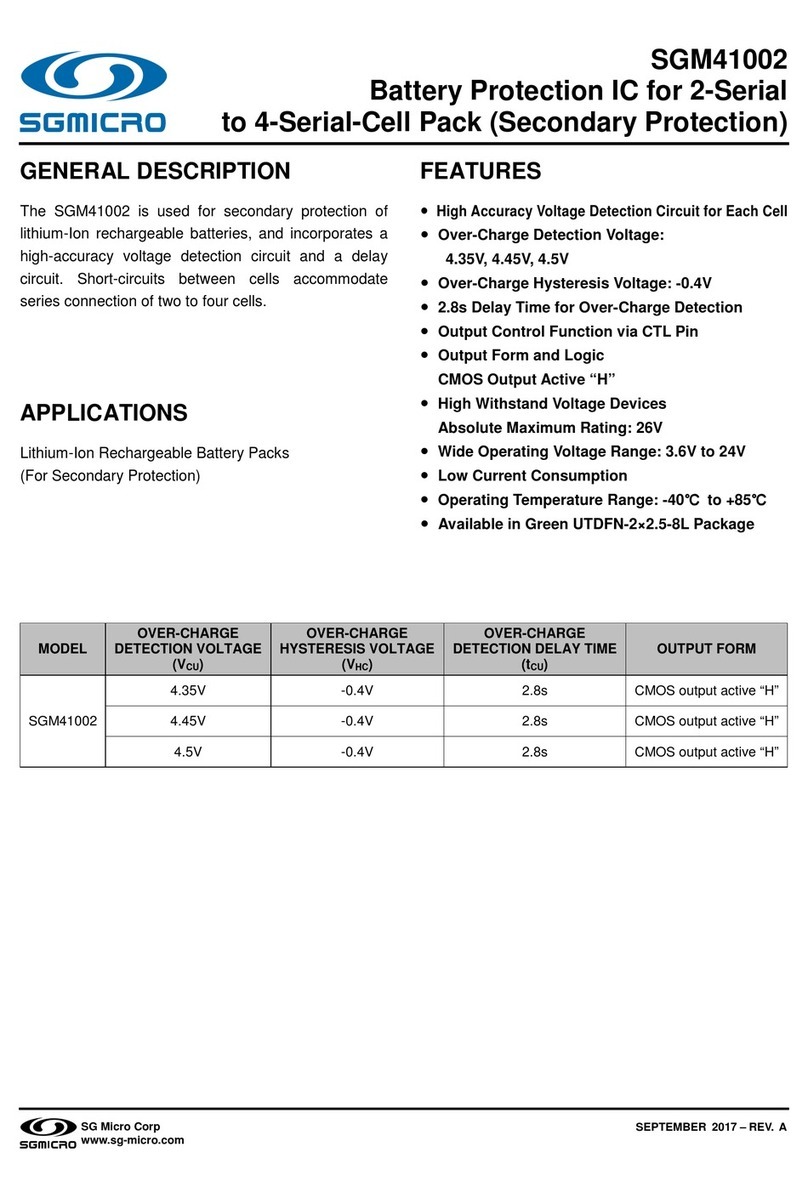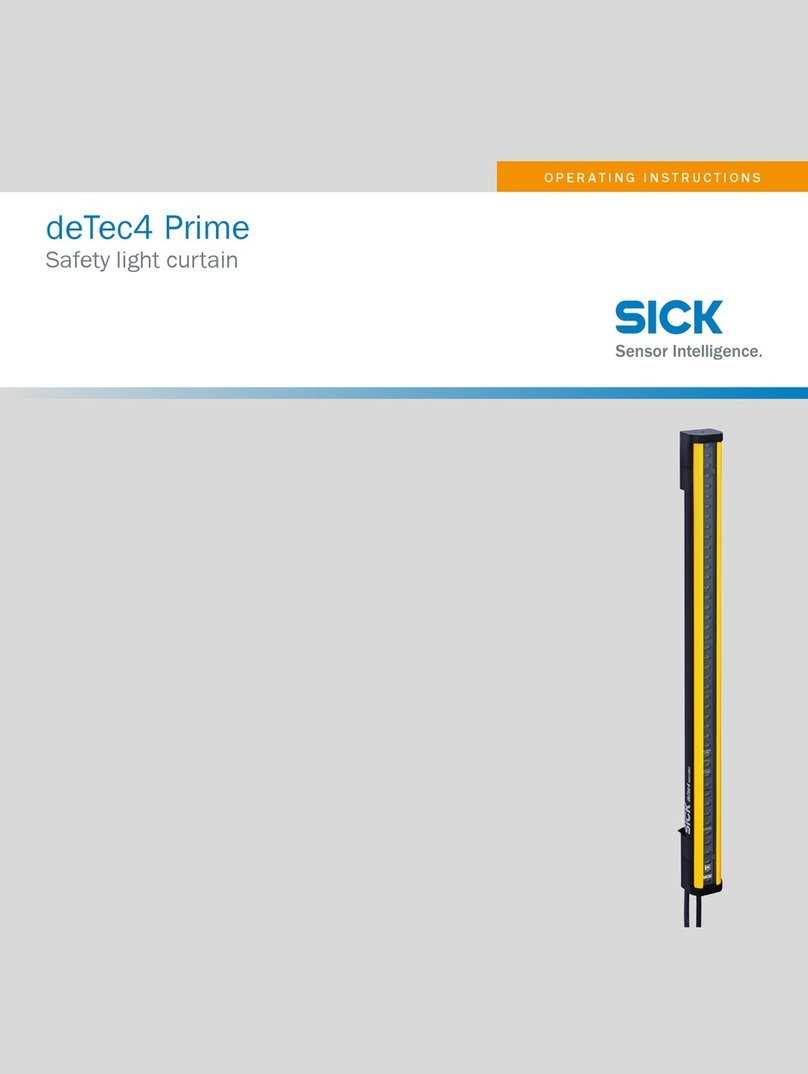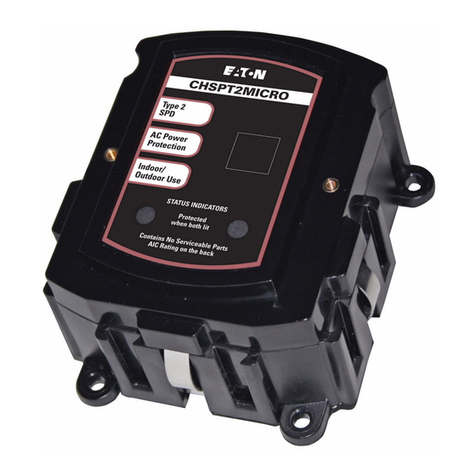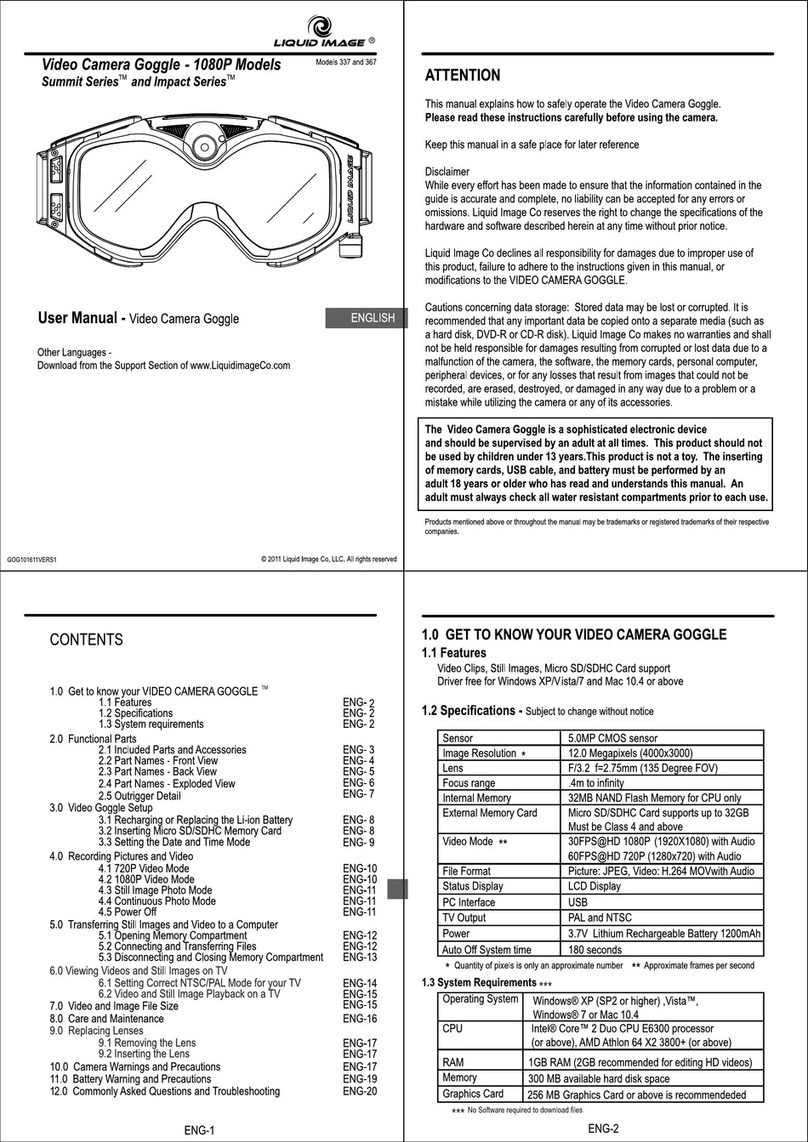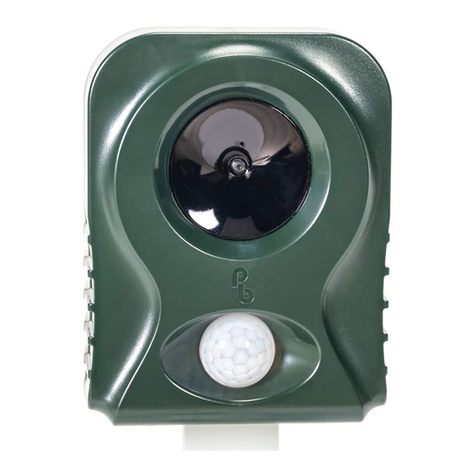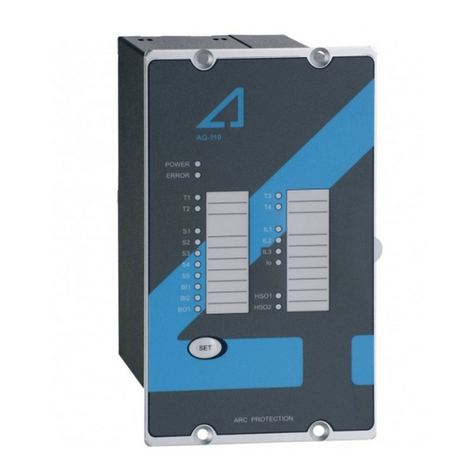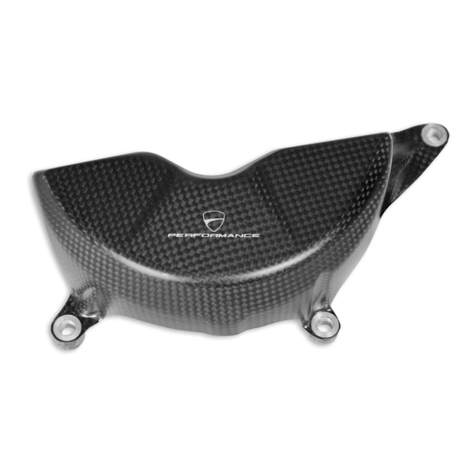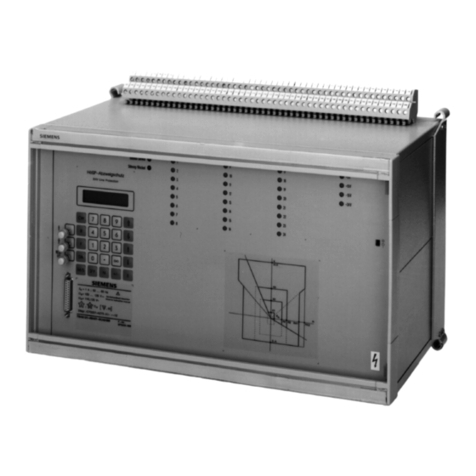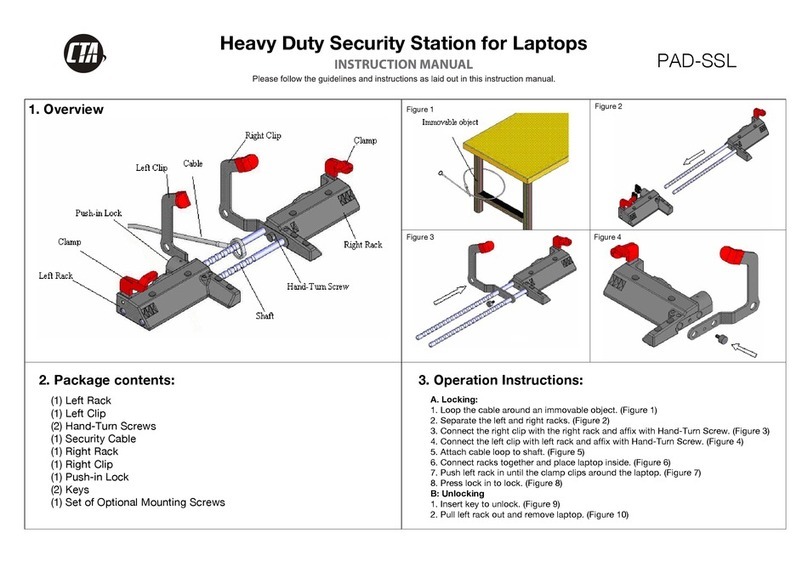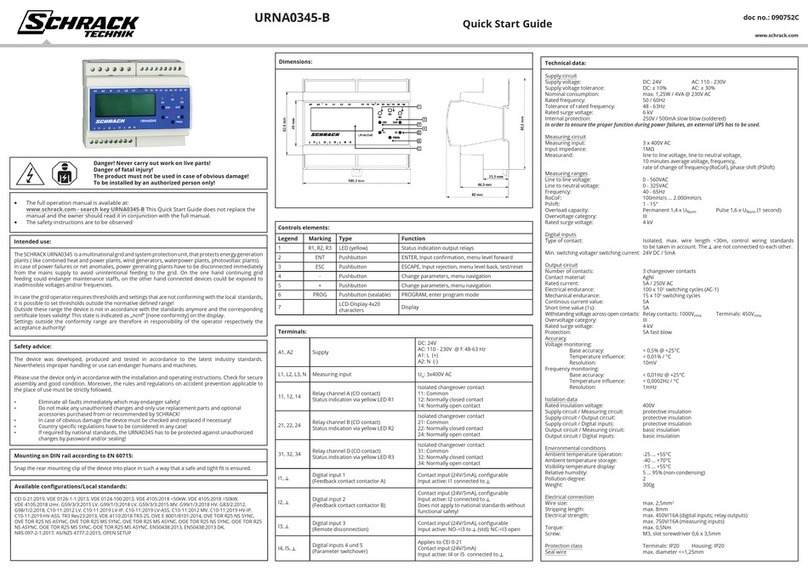StemRad 360 Gamma User manual

StemRad® 360 GammaTM User Manual
1
StemRad® Personal Protection Revised January 2017
StemRad® 360 GammaTM User Manual
***This information packet may not be removed except by the end user***
Radiation Protection for the
Day Prevention FailsTM

StemRad® 360 GammaTM User Manual
2
Table of Contents
Product Features
3
Safety Considerations
4
Wearer Qualifications
4
Required and Additional Equipment
4
Garment Maintenance Schedule
6
Garment Inspection
6
Internal Inspection
7
Repairing Garment
7
Dosimeter Card Replacement
7
Duration of Recommended Use
7
Storage Conditions
8
Transportation
8
Suggested Undergarments
8
Sizing Considerations
8
Donning the Garment
8
Doffing the Garment
10
Decontamination and Cleaning
10
Garment Retirement Considerations
11
Disposal
11
Usage Guidance
11
Warnings
11
Your Responsibility as a User
12
Disclaimers
13
StemRad 360 Gamma Sizing Chart
14
Inner Label Icon Legend
14
StemRad 360 Gamma Performance
15
Garment Inspection & Test Log
17
Optional Accessories
18

StemRad® 360 GammaTM User Manual
3
Back
Front

StemRad® 360 GammaTM User Manual
4
Safety Considerations
IMMEDIATELY STOP WORK IF PERSONAL
PROTECTIVE EQUIPMENT (PPE) FAILS. If any
item of the PPE fails during use,
immediately cease work activity, safely
remove the PPE, determine the cause of the
PPE failure and re-evaluate the selection
and use of the PPE for that task. Be sure to
read, understand and follow the
information in this manual and all
applicable federal, state and local
occupation safety and health statutes.
Serious injury or death may occur from
improper use of PPE. Proper use must be
consistent with NFPA 1500, Standard on
Fire Department Occupational Safety and
Health Program and NFPA 2113, Standard
on Selection, Care, Use and Maintenance of
Flame-Resistant Garments for Protection of
Industrial Personnel against Flash Fire.
Additionally, use these garments in
accordance with applicable personal
protective equipment regulations, which in
the United States is 29 CFR 1910.132. For
users of these garments outside the United
States, consult national or other applicable
personal protective equipment laws and
regulations.
While wearing any StemRadTM garment,
including the 360 Gamma, do not knowingly
enter an environment in which the
radiation levels are beyond turn-back
exposure rates and dose limits as defined in
local guidelines. Immediately retreat if you
determine that you are exposed to
radiation levels which are beyond turn-back
exposure rates and dose limits as defined in
local guidelines while wearing any
StemRadTM garment, including the 360
Gamma.
StemRadTM garments will not protect you in
all situations and environments or protect
you from all radioactive materials. You must
be a trained and qualified safety
professional to select radiation protective
clothing. It is your responsibility as a user of
this garment to determine the level of
exposure and the proper PPE needed. Most
performance properties cannot be tested
by the users in the field.
If any of the following symptoms develop
while you are wearing a StemRadTM
garment, immediately leave the
contaminated area, undergo field
decontamination, and remove (doff) the
garment:
Fever
Difficulty breathing
Nausea
Excessive Tiredness
Dizziness
Numbness
Any unusual odor or taste
Eye or skin irritation
Narrowing or dimming of vision
Claustrophobia
Loss of balance or orientation
Wearer Qualifications
Do not wear a StemRadTM garment unless
you are properly trained in its usage. You
must be in good physical condition to wear
these garments. Consult a physician before
donning one of these garments to ensure
you are capable of wearing these garments
under the expected work conditions and
environment.
Required and Additional Equipment
To help protect you while wearing StemRad
garments and to ensure that the garment
performs as intended, wear, at a minimum,
several additional items of PPE.
Environmental testing and hazard

StemRad® 360 GammaTM User Manual
5
assessment by a safety professional can
help identify hazards and risk levels and
direct choices of permissible PPE.
At a minimum, wear the following
additional PPE with a StemRadTM garment
such as the 360 Gamma (Note: other PPE
equipment should be worn over the 360
Gamma):
RESPIRATORS: Protection of internal organs
from inhalation of radioactive particulates
can be provided by wearing an appropriate
particulate respirator. Recommended
respiratory PPE for a radiation emergency
includes a full-face piece air purifying
respirator with a P-100 or High Efficiency
Particulate Air (HEPA) filter.
A representative Air-purifying respirator
(APR):
In the case of firefighters, the self-
contained breathing apparatus (SCBA) will
provide the highest level of protection.
It is your responsibility to verify that the
selected respirator will provide adequate
protection.
DOSIMETERS: PPE should include a personal
radiation dosimeter whenever there is
concern about exposure to penetrating
ionizing radiation.
•Direct-reading personal radiation
dosimeters may be used to monitor
radiation dose and can help workers
stay within recommended Dose
Limits for Emergency Workers.
•Direct-reading dosimeters should be
worn so that a worker can easily see
the read-out and/or hear warning
alarms.
DERMAL PROTECTION: PPE to prevent skin
contamination of particulates is very
effective against particulate-borne radiation
hazards (i.e., alpha and beta particles). In a
radiation-only event, typical fire fighter
"turn-out" gear, is generally adequate for
this purpose, yet the use of Level C (U.S.
Guidelines) Dermal protection is advised.
Level C dermal protection:
Overalls
Inner and outer
chemical-resistant
gloves.
Two-piece chemical
splash suit
Face shield
Disposable chemical-
resistant overalls
Chemical-resistant
inner suit (e.g, Tyvek)
Chemical-resistant
boots, with steel toe
and shank OR
Disposable,
chemical-resistant
outer boot covers.
Hard Hat
The use of turn-out gear or any disposable
protective clothing suitable for particulate
exposure should be followed by appropriate
decontamination of personnel and
equipment.

StemRad® 360 GammaTM User Manual
6
It is your responsibility to verify that the
selected dermal PPE will provide adequate
protection.
OTHER PERSONAL PROTECTIVE
EQUIPMENT: You may need other PPE
based on the hazard assessment and PPE
selection made by a trained and
experienced safety professional. It is your
responsibility to determine if you need
separate head protection. For example, you
may require hearing protection due to high
levels of external noise or high noise levels
generated by supplied air systems. You may
require additional protective equipment to
deal with hazards created by, but not
limited to, the following conditions:
-Flammable or Explosive Environment
- Chemical Hazards
- Biological Hazards
-Decontamination
-Extreme Heat (Heat Stress)
-Extreme Cold (Hypothermia)
-Asphyxiating Atmosphere
-Physical Hazards (Sharps, Puncture,
Rough Surfaces, Falling Debris)
-Slipping or falling
-Visibility - of wearer & by wearer
-Communications
Garment Maintenance Schedule
Work/Interval
Upon
Receipt
Prior to Use
After each
Use
Annually
Every five
Years
Inspect by Wearer
X
X
Cleaning
X
Garment Inspection
X
X
X*
Internal Inspection
X*
Dosimeter
Replacement
X**
X***
*Inspection by StemRad authorized employee or authorized service provider- needed to
maintain any type of warranty.
**Only in radioactive fields ***High temperatures may necessitate more frequent replacement
Garment Inspection
You must inspect the physical integrity of
the garment component of the 360 Gamma
at the following times:
1. Immediately upon receipt from supplier
2. After a garment is worn
3. Every 5 years by a StemRad specialist
Your inspection determines if the
performance of the garment has been
compromised. Perform the first inspection
as soon as you receive the product. This

StemRad® 360 GammaTM User Manual
7
ensures that no damage occurred during
shipping. Inspect the garment after each
use, especially if the product is subjected to
physical stress.
Do not use contaminated, damaged or
altered StemRad products.
Follow these steps with inspecting the
garment:
1. Lay the 360 Gamma on a clean, smooth
surface.
2. Examine the outside of the garment for
holes, cuts, or tears.
3. Examine the garment material and
seams for signs of damage. Fabrics and
seams sometimes have visual blemishes
that do not affect performance. A breach or
rupture of a seam or the fabric itself is
cause for rejection.
4. Examine the shoulder straps for integrity
and make sure they are firmly connected to
the belt component of the product by
pulling on them.
5. Examine the garment main buckle for
easy fastening and release.
6. Examine all secondary buckles, sliders
and straps for smooth operation to make
sure they are not obstructed
8. Examine dosimeter card to ensure that
the color indicator is blank.
Repairing Garment
Do not use a damaged, altered or
contaminated garment. If an
uncontaminated or unaltered garment fails
a visual inspection, contact your safety
equipment distributor or StemRad at +1-
determine if the garment can be returned
for inspection or repair. Note: Charges may
be incurred. Contaminated garments will
not be accepted for repair. Do not send a
garment that is discolored, smells or has an
abnormal Geiger counter reading. With
each returned garment, you must provide
the garment testing log and a declaration
that the garment has not been exposed to
radioactive materials, chemicals or to
biological pathogens. Do not attempt to
return a product without authorization
from your safety equipment distributor or
from StemRad.
Internal Inspection
The radiation attenuating component of the
360 Gamma (i.e. ‘core’) is to be inspected
only by a StemRad specialist. Such an
inspection is to be done at your facility once
every 5 years.
Dosimeter Card Replacement
Contact StemRad tech support at +1-650-
388-9112 or [email protected] to replace
the dosimeter card. Replacement should
take place at least once a year, dependent
on storage conditions- cooler storage
conditions are preferred. Regardless, if
coloration of the dose indicator is present,
the card should be replaced as soon as
possible.
Duration of Recommended Use
The StemRad 360 Gamma may be used as
long as it passes a full visual inspection. In
addition to the visual inspection, the 360
Gamma must pass an inspection of its inner
core (the radiation attenuating component)
every 5 years. This inspection is to be done
only by a StemRad specialist.

StemRad® 360 GammaTM User Manual
8
The dosimeter card in each unit is to be
replaced by the end user at least once a
year (see ‘Dosimeter Card Replacement’
above).
Retire and label “For Training Use Only” or
discard after mutilation, uncontaminated
units that do not pass a visual inspection.
Storage Conditions
Long-term Storage of the 360 Gamma
should be in its original case in a cool, dark,
dry location free of dirt and insects. Short-
term storage, such as in a deployable
vehicle, should be such that there is
minimization of exposure to sunlight,
ozone, high temperatures (>120° F) and
vehicle exhaust fumes.
Avoid compression under heavy weights
and sharp edges or projections. Never step
on the 360 Gamma. Never place or store
heavy objects on top of the units.
Transportation
If the 360 Gamma needs to be transported
over distances, it should be placed in a
crush-proof container to avoid physical
damage.
Suggested Undergarments
Thick, bulky clothing worn underneath the
360 Gamma will affect the fit of the
garment and potentially compromise the
protection provided.
It is strongly advised to wear the 360
Gamma as close as possible to the skin of
the user. Thin, non-melting materials
should be used in undergarments. These
could include NOMEX or other non-melting
fabrics such as wool, cotton, silk and rayon.
Sizing Considerations
Verify the size of your StemRad garment
before actual use. Start with the sizing chart
found at the end of this document. Verify
the size selection with a garment of the
recommended size and style you intend to
use.
Don the garment and perform a series of
exercises to simulate your movements
under actual work conditions.
Such exercises may include:
-pick up a box, carry it and set the box
down in a separate location.
-pick up a wrench from the ground.
-open the garment closure.
-climb up and down stairs and ladder.
-wear and remove the SCBA if applicable.
A garment one size larger or smaller than
recommended in the table may be
required. However, a garment that is too
large is as unsatisfactory as a garment that
is too small.
Donning the Garment
Before donning the 360 Gamma:
- conduct a visual inspection of the garment
as detailed under ‘Garment Inspection’,
above.
- read garment size label to assure proper
fit.
-remove as many layers of your clothing as
possible to minimize the space between the
garment and your skin.

StemRad® 360 GammaTM User Manual
9
Donning your 360 Gamma is simple, yet it is important to follow the following steps in order to
ensure optimal protection:
1. Remove the 360 Gamma from its case by grabbing the rear handle (as illustrated in Step 1,
below).
2. Place the shoulder straps on your shoulders, allowing the belt portion to lie freely around
your waist (as illustrated in Step 2, below).
3. Secure the front closure mechanism loosely (as illustrated in Step 3, below).
4. Sit on a chair with a straight back (your hip joint should make a 90 degree angle). In this
position the bottom edge of the 360 Gamma should rest on top of your thighs. If it does not,
loosen shoulder straps until it does (as illustrated in Step 4, below).
5. Secure the front closure mechanism tightly (as illustrated in Step 5, below). Secure sternum
strap at this opportunity as well.
6. Tighten the shoulder straps until the bottom edge of the 360 Gamma just lightly touches the
top of your thighs (as illustrated in Step 6, below).
7. Other PPE should be worn over the 360 Gamma.
Step-by-step illustration of product donning:

StemRad® 360 GammaTM User Manual
10
Doffing the Garment
If your garment has been contaminated or
is suspected of being contaminated, you
must first undergo field decontamination.
In case of contamination, continue to use
your respirator until the garment has been
doffed and removed.
In case of no contamination, or after field
decontamination, remove the garment by
following these easy steps:
1. Release buckle
2. Loosen belt strap
3. Release sternum strap
4. Lift one shoulder strap while
concomitantly grabbing the rear handle.
5. Lift second shoulder strap and guide the
360 Gamma to its case by the rear handle.
Decontamination and Cleaning
StemRad garments are designed for
multiple-use applications –they can be
worn until damaged, altered or irreversibly
contaminated.
If the garment is contaminated during use,
it must be decontaminated.
It is the responsibility of the safety
professional having responsibility over
usage of the garment to determine whether
the suit has been irreversibly contaminated
or may be safely decontaminated and re-
used.
Field Decontamination
If you know or suspect that a garment has
been contaminated with hazardous
radioactive or chemical materials:
Use water and mild dishwashing liquid to
field decontaminate the garments prior to
doffing.
Do not use oxidative, corrosive or reactive
decontamination solutions to remove
known or suspected chemical or radioactive
contaminants.
You must discard the garment if after field
decontamination it still shows abnormal
Geiger counter readings.
The steps of field decontamination are:
1. Leave the hot zone with adequate air
supply (in case of a SCBA) for field
decontamination and removal of the
garment. Continue to wear the respirator
until you completely doff the garment and
it is removed from your presence.
2. Thoroughly clean the garment using
household dishwashing liquid and soft
brushes, followed by a thorough rinsing in
water.
3. Remove the excess rinse water from the
garment before doffing. Absorb and dry the
rinse water on and near the 360 Gamma.
Inspection before re-use:
Field decontamination does not guarantee
that a garment is safe to re-use. Garments
previously contaminated with radioactive or
otherwise hazardous materials must not be
re-used until removal of contaminants is
verified (e.g, by a Geiger counter reading).
Thoroughly inspect a decontaminated
garment before re-use following the
instructions provided in manual (see,
‘Garment Inspection’, above). Do not re-use
the garment if it fails the inspection or
shows sign of alteration, damage or
contamination.

StemRad® 360 GammaTM User Manual
11
Garment Retirement Considerations
Retire StemRad garments from service if
any of the following criteria are met:
-Garment fails to pass visual inspection.
-Garment has had prolonged exposure to
intense heat and/or ultraviolet light.
-Garment has been irreversibly
contaminated
-Garment has been decontaminated with
an oxidative, corrosive or reactive
decontamination agent.
-Retired garments that are not
contaminated may be labeled and used “For
Training Only”. Label with a permanent
marker.
Disposal
Please contact StemRad technical support
for consultation regarding disposal at +650-
388-9112 or [email protected] .
Usage Guidance
PPE Failure
IMMEDIATELY STOP WORK IF PERSONAL
PROTECTIVE EQUIPMENT (PPE) FAILS. If any
item of the personal protective equipment
fails during use, immediately cease work
activity, safely remove the PPE, determine
the cause of the PPE failure and re-evaluate
the selection and use of the PPE for that
task.
Required Equipment: The StemRad 360
Gamma should be worn with additional PPE
as described in the “Required and
Additional Equipment” section of this guide.
Temperature Range: StemRad garments
can be used in an ambient environment
from -13° F (-25° C) to 190° F (88° C). Do not
store StemRad garments at temperatures
exceeding 120° F (48° C).
**Warnings**
Follow these warnings and limitations at
all times:
- The 360 Gamma provides only partial body
protection from externally penetrating
ionizing radiation. Most of your body is
unprotected.
-The 360 Gamma is configured to protect
bone marrow. The 360 Gamma DOES NOT
provide whole body protection.
-The 360 Gamma provides meaningful
partial body protection only against
common radioisotopes such as Cs-137, Te-
132, I-132, I-131, Ba-140, Zr-95, Nb-95. The
360 Gamma’s efficacy decreases as photon
energies rise and provides insignificant
protection from radioisotopes with photon
energies above 1.2 MeV. Always know the
range of radioisotope energies you are
facing and the relative contribution of each
to the total dose.
-The 360 Gamma may be beneficial in
reducing the incidence of Acute Radiation
Sydrome (ARS), but provides little or no
protection from the long-term effects of
ionizing radiation (such as cancer).
-The 360 Gamma provides no protection
from chemical or biologic hazards.
-The 360 Gamma is made of fire-resistant
materials yet does not protect you from
fire.

StemRad® 360 GammaTM User Manual
12
-The 360 Gamma offers little or no thermal
insulation to protect the wearer's skin from
prolonged exposure to hot or cold. The
temperature range for the fabric and seams
is well beyond the temperatures that the
human skin can withstand without injury.
-If the danger of exposure to biological
aerosols or chemical warfare chemicals
exists, consider use of a protective
ensemble certified to NFPA 1991 or to NFPA
1994.
-Minimize or avoid direct exposure of
personnel to ionizing radiation. Always
follow turn-back exposure rates and dose
limits as defined in local guidelines. Do not
assume that these guidelines do not apply
to you because you are wearing StemRad
PPE. For more information, see “Safety
Considerations” above.
-StemRad garments are not suitable in all
situations and environments. All decisions
regarding the selection and use of Radiation
protective clothing must be done by trained
and qualified safety professionals.
-It is the user’s responsibility to determine
the level of exposure and the proper
personal protective equipment needed.
- You must be physically fit to wear a
StemRad garment. You should be examined
and approved by a physician as physically fit
to wear the 360 Gamma.
Your Responsibility as a User
You must be a trained and qualified safety
professional to select radiation protective
garments.
It is your responsibility as a user of this
garment to determine the level of exposure
and the proper personal protective
equipment needed.
It is your responsibility as a user to select
garments which are appropriate for each
intended use and which meet all specified
government and industry standards.
StemRad garments are intended to help
reduce the potential for injury, but no
protective apparel alone, can eliminate all
risk of injury. Protective apparel must be
used in conjunction with general safety
practices.
StemRad garments are designed for limited
use. It is the wearer’s responsibility to
inspect garments before use and
periodically to ensure that all external
components, including fabric, zippers,
seams, and interfaces are in good working
condition.
Failure to fully inspect garments may result
in serious injury to the wearer. Never wear
garments that have not been fully
inspected.
Immediately remove from service any
garment which does not pass inspection.
Never wear a garment that is contaminated,
altered or damaged.
If the StemRad garment is altered, abraded,
cut, torn, punctured or otherwise and in
any way compromised, do not use.
The 360 Gamma has finite resistance to
abrasion, cut, tear and puncture.
If the StemRad garment is damaged during
use and no longer adheres to the user’s
body, retreat immediately to a safe
environment, and thoroughly
decontaminate the garment.

StemRad® 360 GammaTM User Manual
13
It is the responsibility of the garment
wearer, and the wearer’s supervisor and
employer to examine the condition of the
garment before and during use to be sure
that the garment is suitable for use in that
environment by that employee.
Disclaimers
StemRad makes no guarantee of results and
assumes no obligation or liability in
connection with the use of StemRad
garments and accessories. It is user’s
responsibility to determine the level of
hazards and the proper personal protective
equipment needed.
IN NO EVENT SHALL STEMRAD BE LIABLE
FOR ANY SPECIAL, INCIDENTAL, INDIRECT,
PUNITIVE OR CONSEQUENTIAL DAMAGES,
WHETHER ARISING FROM CONTRACT,
TORT, WARRANTY, REPRESENTATION,
INSTRUCTION, DESIGN OR
MANUFACTURING DEFECTS, OR ANY OTHER
CAUSE OR THEORY.
The product information provided in this
manual corresponds to our current
knowledge on the subject. It is offered
solely to provide possible suggestions for
your own experimentations. It is not
intended, however, to substitute for any
testing you may need to conduct to
determine for yourself the suitability of our
products for your particular purposes. It is
the user’s responsibility to determine the
level of risk and the proper protective
equipment needed for the user’s particular
purposes. This information may be subject
to revision as new knowledge and
experience becomes available. Since we
cannot anticipate all variations in actual
end-use, STEMRAD assumes no liability in
connection with any use of the StemRad
360 Gamma garment and accessories.
STEMRAD MAKES NO WARRANTIES AND
ASSUMES NO LIABILITY IN CONNECTION
WITH ANY USE OF THE INFORMATION IN
THIS PUBLICATION.
Nothing in this publication is to be
considered as a license to operate under or
a recommendation to infringe any
trademark or patent right.
StemRad™, 360 Gamma™and Radiation
Protection for the Day Prevention Fails™are
trademarks or registered trademarks of
StemRad LTD.
Please contact StemRad LTD. at the address
below with regard to any questions
concerning the use of the 360 Gamma.
StemRad LTD., 4 Berkovich Street, Tel Aviv
64238, Israel . www.stemrad.com.

StemRad® 360 GammaTM User Manual
14
StemRad 360 Gamma Sizing Chart
Waist
Inner Label Icon Legend
Icon
Description
consult User Manual
protection against ionizing radiation
can be used with firefighters’ clothing and
SCBA’s
complies with the PPE Directive, 89/686/EEC
waist
height
72-87 cm
28''-34''
88-104 cm
35''-41''
105-120 cm
42''-47''
182-200 cm
6’0’’-6'7''
S Tall
M Tall
L Tall
150-181 cm
4’11’’-5'11''
S Reg.
M Reg.
L Reg.
Height

StemRad® 360 GammaTM User Manual
15
StemRad 360 Gamma Performance
Cloud Source Attenuation:
TLD
No.
Unprotected
StemRad
Protected
TLD
No.
Unprotected
StemRad
Protected
TLD
No.
Unprotected
StemRad
Protected
TLD
No.
Unprotected
StemRad
Protected
1
0.668
0.524
16
0.592
0.328
31
0.657
0.378
46
0.589
0.404
2
0.656
0.438
17
0.608
0.372
32
0.658
0.454
47
0.612
0.408
3
0.702
0.41
18
0.595
0.349
33
0.653
0.481
48
0.581
0.36
4
0.662
0.41
19
0.622
0.36
34
0.707
0.49
49
0.557
0.424
5
0.625
0.34
20
0.69
0.378
35
0.627
0.398
50
0.524
0.399
6
0.789
0.398
21
0.627
0.388
36
0.569
0.346
51
0.52
0.408
7
0.624
0.357
22
0.607
0.382
37
0.64
0.358
52
0.58
0.303
8
0.654
0.367
23
0.517
0.317
38
0.592
0.271
53
0.56
0.327
9
0.606
0.387
24
0.649
0.308
39
0.598
0.372
54
0.536
0.326
10
0.591
0.414
25
0.678
0.362
40
0.637
0.407
55
0.579
0.382
11
0.655
0.369
26
0.722
0.4
41
0.572
0.388
56
0.584
0.408
12
0.646
0.382
27
0.719
0.403
42
0.616
0.406
57
0.422
0.484
13
0.684
0.352
28
0.729
0.375
43
0.634
0.313
58
0.506
0.534
14
0.675
0.338
29
0.596
0.377
44
0.623
0.345
59
0.59
0.546
15
0.625
0.374
30
0.584
0.382
45
0.629
0.402
60
0.587
0.536
61
0.494
0.454
Relative pelvic marrow doses upon exposure to a cloud source of Cs-137 in the absence and presence of
the StemRad 360 Gamma. The dose recorded in each numbered TLD dosimeter is expressed as a fraction
of the ambient dose (in-air). In sketch below front and rear views of a human skeleton with exact
placement of the TLD dosimeters is shown.

StemRad® 360 GammaTM User Manual
16
Lead Equivalence and Linear Radiation Attenuation:
The figure below shows the varying thickness of protective material in the 360 Gamma in terms
of lead equivalence, together with the reduction of radiation intensity provided by each
thickness level in terms of radiation from a linear Cs-137 source.

StemRad® 360 GammaTM User Manual
17
StemRad 360 Gamma Garment Inspection & Test Log
SERIAL #...........................................................................................................................................
DATE
INSPECTOR
REMARKS
TEST RESULTS

StemRad® 360 GammaTM User Manual
18
Optional Accessories
Real-time Radiation Monitor (NukAlert™)The StemRad 360 Gamma optionally comes with a
Nukalert real-time radiation monitor and specialized pouch. The Nukalert is a calibrated
radiation meter that alarms when exposed to dangerous levels of nuclear radiation. It does not
respond to relatively safe, low level radiation. Its primary utility is to aid in the location and
evaluation of shelter during a radiation emergency. It may also be used to verify the reduction
of radiation during evacuation. The NukAlert indicates radiation exposure by producing groups
of audible alarm chirps about twice per minute. The number of chirps per group is easily
counted. The approximate radiation intensity is indicated by the number of chirps produced per
group. The lowest indicated level of radiation (0.1 Roentgen per hour) will cause a single chirp
every 35 seconds. With each doubling of the radiation intensity, an additional chirp is added to
each alarm chirp group. At 0.2R/hr the unit will double chirp every 30 seconds. At 0.4R/hr it will
chirp three times in a row, repeating every 25 seconds, etc. At the highest level (above 50R/hr)
the alarm will change to an uninterrupted series of siren-like sounds that become shorter and
more frequent if the exposure rate continues to increase.
Dosimeter Card (RADTriage) The StemRad 360 Gamma optionally comes with a RADTriage
dosimeter card for monitoring cumulative dose. The specialized placement of this card on the
shielded side of the 360 and adjacent to the posterior marrow allows for monitoring the
shielded marrow dose and may be used in determining the need for transplantation following
exposure by a certified hematologist. RADTriage monitors 20 mSv (2 rad) and higher doses of
Gamma/x-ray radiation in a radiological incident. The sensor instantly develops color upon
exposure to radiation. Color development is permanent and cumulative. The longer the
exposure the darker the color. How to read: Radiation will darken the sensor located between
the numbered squares. Estimate the exposure dose by comparing the color of the sensor with
the color reference squares. If the sensor develops a color in-between any two adjacent
squares, this indicates an in-between dose. Check the FIT indicator regularly. The FIT indicator is
located to the right of the sensor - the larger square with dark colored dots in the middle. If the
dots have turned red the sensor has been exposed to excessive heat and the card must be
replaced. The card is expired if the color of the area surrounding the dots of the FIT indicator
matches the bar to its right. This can be caused by exposure to too much sunlight and/or heat,
and means the card must be replaced.

StemRad® 360 GammaTM User Manual
19
Page Intentionally Left Blank for User Notes
Table of contents
Popular Protection Device manuals by other brands

Honeywell
Honeywell Miller Vi-Go Manual Series User instruction manual
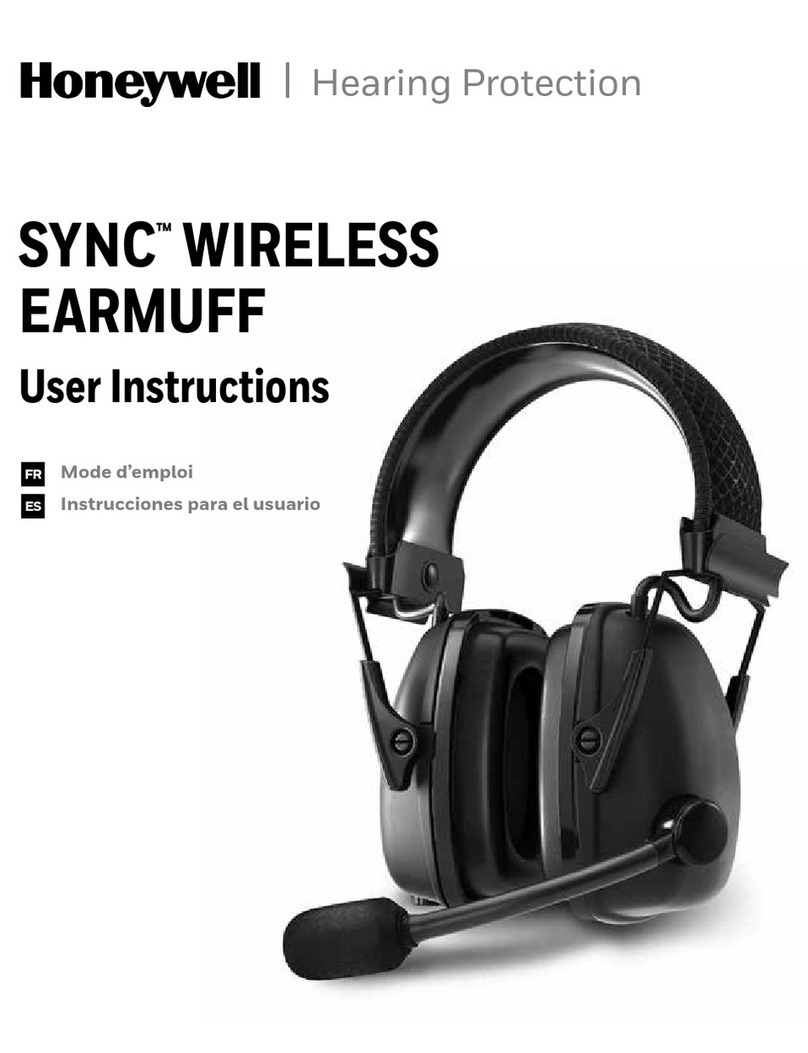
Honeywell
Honeywell SYNC WIRELESS EARMUFF User instructions

I-Gard
I-Gard IPC DSP OHMNI instruction manual
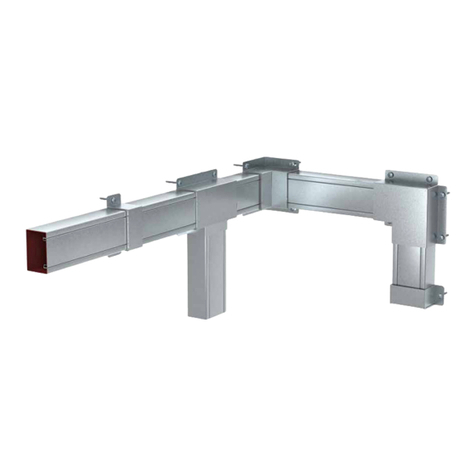
OBO Bettermann
OBO Bettermann PYROLINE Rapid Mounting instructions
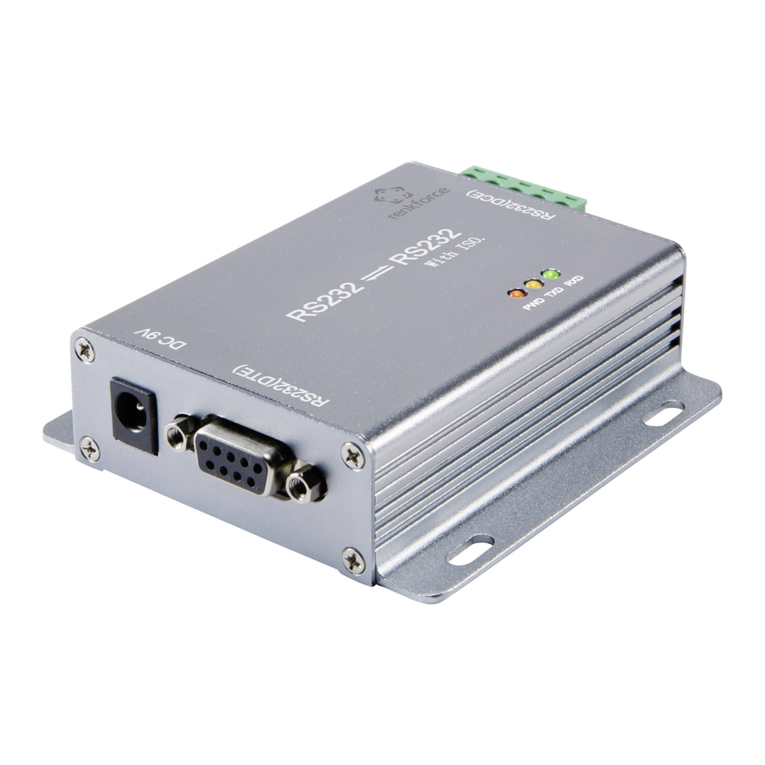
Renkforce
Renkforce RS232 operating instructions
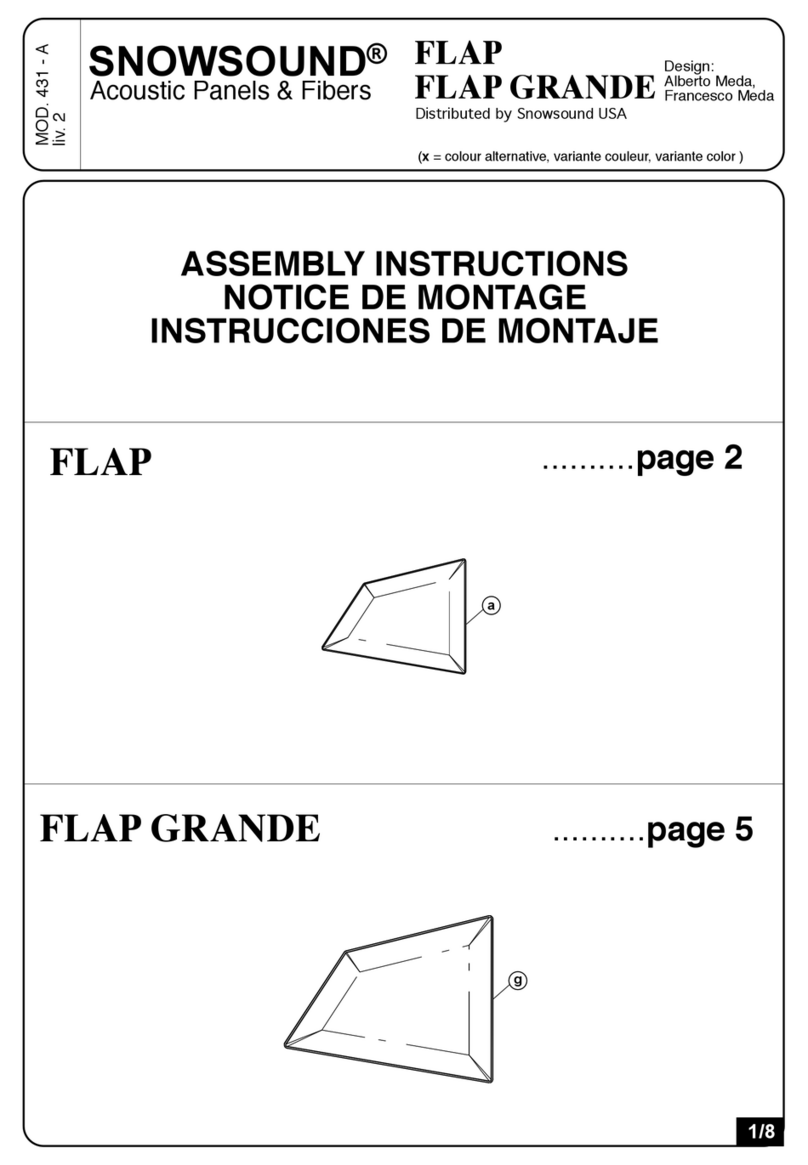
SNOWSOUND
SNOWSOUND FLAP Assembly instructions
